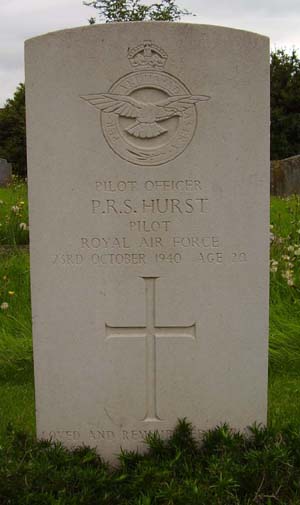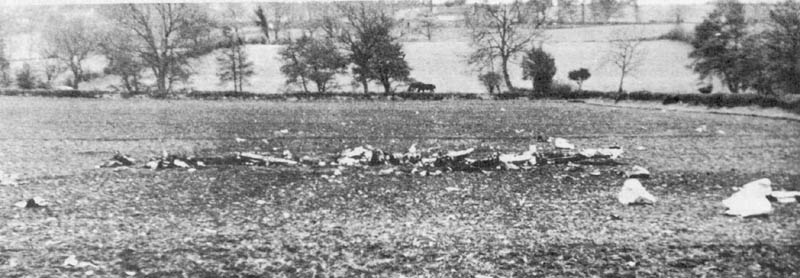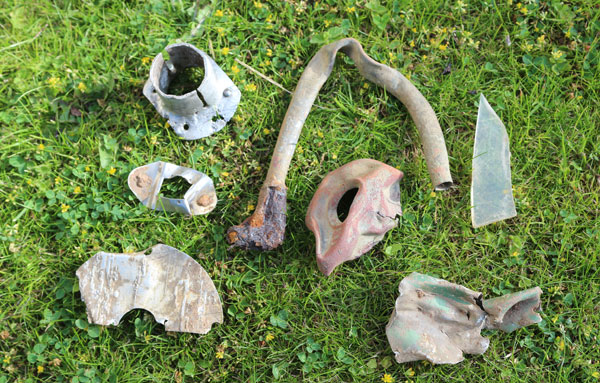On 23rd October 1940 the pilot of this 600n Squadron aircraft took off from Catterick to undertake a local flying exercise and was being vectored by RAF Dishforth Flying Control. 600 Squadron had just arrived at Catterick a few days earlier from the South-East where they had swapped airfields with 219 Squadron. The pilot was inexperienced on flying on instruments, when the weather made a turn for the worse he lost control whilst flying on his instruments. The aircraft struck the ground near Kirby Malzeard in a near vertical dive and broke up sadly killing the pilot instantly at 11.15hrs.
Pilot - P/O Peter Richard Scott Hurst RAF (41421), aged 20, of Hannington, Hampshire. Buried Catterick Cemetery, Yorkshire.

The pilot's gravestone at Catterick Cemetery. At the time of his death he had a total of 291 hours flying with 45 hours on the Blenheim type. He joined the RAF in 1938 and had gained his wings in May 1939 having trained at 9 FTS. He received a Commission to the rank of Acting P/O on 14th December 1938 and was graded as P/O on 3rd September 1939. He joined 600 Squadron at Redhill in September 1940 and qualified as a Battle of Britain pilot having flown operationally.


Two photographs showing the area of the crash. The top one appeared in Brian Rapier's "White Rose Base" book, the lower photograph is taken of exactly the same area in 2008. In June 2008 I was invited to attempt to locate the site by fellow air historians Albert Pritchard, Ken Reast and Eric Barton who had been given permission to visit the field by the land owner Mr M.Robinson. We located a handful of pieces in the area of the crash but enough to say this was the exact area of the crash. Of those parts a makers plate was discovered and was identified as part of the hydraulic system.

The plate mentioned previously.

A brass part with a part number, the "FB" part relating to Blenheims and more specifically "Fedden & Butler".

Blenheim L1272 was built to contract 527114/36 by The Bristol Aeroplane Company Ltd. at Filton and was awaiting collection in July 1938. It was passed between a number of units. On 10th August 1938 it was flown directly to and taken on charge by 21 Squadron at Lympne. On 15th August 1938 it moved with the unit to Eastchurch. On 31st December 1938 it transferred to 139 Squadron at Wyton and on 8th November 1939 it moved with the unit to Alconbury. On 20th November 1939, for reasons that remain unspecified, it was collected by 54 MU (Salvage and repair) at Cambridge and on 11th December 1939 it was transported by 4 MU to the Cunliffe Owen factory at Eastleigh where it was presumably converted from a bomber to a fighter, on 7th June 1940 it was allocated to 24 MU at Ternhill and on 10th June 1940 it was flown to 24 MU at Ternhill for storage. On 22nd August 1940 it was taken on charge by 219 Squadron then based at Catterick. On 12th October 1940 219 Squadron moved south to Redhill, leaving behind L1272 which was taken on charge by 600 Squadron on 13th October 1940 which had inturn moved to Catterick from Redhill the previous day. On 23rd October 1940 it crashed at Kirby Malzeard and Cat.W/FA damage was recorded. It was struck off charge on 29th October 1940.